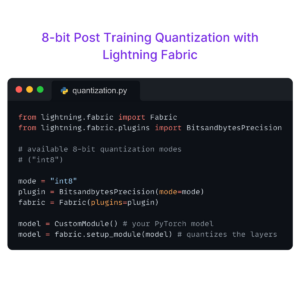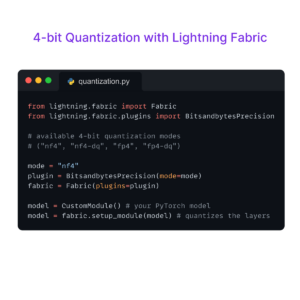This week, researchers are improving the audio quality of your streaming services and continuing to improve reinforcement learning algorithms. Bumble open sourced its AI tool that combats “cyber-flashing” and Shutterstock is showing what the future of generative AI might look like. Let’s dive in!
Research Highlights
🎤 Researchers from the Meta team in Paris released EnCodec, a real-time, high-fidelity, audio codec leveraging neural networks. With audio compression becoming an increasingly important problem for streaming audio and video online, EnCodec seeks to minimize the bitrate of a sample while also minimizing the amount of distortion correlated with human perception. Currently, lossy neural compression models struggle with representing a wide range of signals and compressing efficiently, both in compute time and in size. EnCodec claims to outperform baselines methods across all evaluated settings as well as showing how Transformer models can be used to further compress the obtained representation by up to 40%, while staying faster than real time.
🧮 By modeling their training histories with a causal sequence model, researchers from DeepMind proposed a novel technique for distilling reinforcement learning (RL) algorithms into neural networks called Algorithm Distillation (AD). In contrast to sequential policy prediction architectures, AD is capable of improving its policy entirely in-context without changing its network parameters. With sparse rewards, combinatorial task structure, and pixel-based observations, the researchers claim that AD can reinforcement learn in-context in a variety of settings and that it’s capable of learning a more data-efficient RL algorithm than the one that generated the source data.
🔬 Researchers led by Arne Schneuing of Ecole Polytechnique Federale de Lausanne framed structure-based drug design as a conditional generative process in 3D. Their model, DiffSBDD, is trained to capture the distribution of real binding molecules and generates novel ligands and binding conformations jointly with respect to a specific protein target. The researcher’s empirical results claim that the probabilistic framework is capable of generating highly diverse sets of candidate ligands with comparable molecular properties to reference molecules, including predicted binding affinity.
ML Engineering Highlights
📸 Shutterstock, the largest online seller of stock photos, has announced that it will start offering AI-generated images that are backed by OpenAI’s DALL-E 2 generative search engine. The DALL-E integration is scheduled to go live on Shutterstock’s website in the upcoming months and may also serve as a preview of how contributing photographers who serve as the basis for these AI models will be paid. The company did not provide any additional information beyond its statement that it would pay royalties whenever an artist’s intellectual property is used and compensation for artists whose works have assisted in the development of AI models. In order to properly compensate contributors, Shutterstock claimed to keep an internal database of all the assets that have been used to train AI models.
💌 Several AI companies are making it possible for people to communicate and interact with loved ones who have passed away. By creating virtual representations of actual humans using technology similar to that which powers AI chatbots and voice assistants, companies like HereAfterAI and You, Only Virtual are allowing people to speak with dead loved ones via phone, video chat or voice assistant. While the use of AI digital cloning has been proposed as a means of helping people deal with the grieving process, it raises issues about consent and privacy, both pre-and post-mortem.
🪖Lockheed Martin is working with Red Hat to outfit small US military platforms with software designed to handle increased AI workloads as the Pentagon prioritizes supplying its forces with more mobile equipment at greater distances. The technology was most recently used in a demonstration on a Stalker unmanned aerial system to show how AI-enhanced sensing can advance Joint All-Domain Operations by adapting in real-time to a threat environment.
Open Source Highlights
🍆 The dating app Bumble is making its AI tool that identifies unsolicited lewd images open source as part of a larger effort to combat “cyberflashing.” Their tool aptly named, Private Detector, which made its debut in 2019, blurs out nudes sent through the Bumble app and gives the recipient the option of opening the image. An improved version of the AI is now accessible on GitHub and can be used, distributed, and modified for commercial purposes.
🐍 DeepSpeed-MII, a new open-source Python library created by Microsoft to support the widespread adoption of low-latency, low-cost inference of high-performance models, was recently made available. Thousands of well-known DL models with highly effective implementations are now accessible through MII.
Tutorial of the Week
Distributed training is an essential strategy for scaling models and data across multiple devices. Learn how it works — and how you can implement it too — with our guide.
Community Spotlight
Want your work featured? Contact us on Slack or email us at [email protected]
⚡ Takyoung Kim’s repo is a minimal NLP template for fast prototyping of research ideas. It’s a Lightning template, contains both BERT classification code and a simple WandB application, and uses Sweep for hyperparameter tuning.
⚡ This project by Martin Krasser is an implementation of Perceiver, Perceiver IO, and Perceiver AR using Lightning. The modular codebase was designed for easy extension to new tasks and datasets, and its integration with Lightning supports model training at scale.
⚡ Want to know what’s going on with the Lightning framework? Check out our list of pull requests here. Open-source contributions like this are a great way to get started with a coding project. Don’t know where to begin? Join us on Slack!
Lightning AI Highlights
⚡ Attending NeurIPS this year? Interested in making the transition from academia to industry? Stop by our social, hosted by two of Lightning’s very own team members with experience making this transition. Learn more here.
⚡ Lightning is also a NeurIPS platinum sponsor, and we’ll be live in New Orleans all week! We’re always thrilled to talk to members of our community live. If you’ll be at NeurIPS and want to stop by, come see us in the exhibitor hall, or drop us a message on the Lightning community Slack.
⚡ We’re hiring! If you want to join us on our mission to streamline the lifecycle of machine learning development, check out our current openings here.
Don’t Miss the Submission Deadline
- AAMAS 2023: The 22nd International Conference on Autonomous Agents and Multiagent Systems. May 29 – June 2, 2023. (London, UK) Paper Submission Deadline: Sat Oct 29 2022 04:59:59 GMT-0700
- CVPR 2023: The IEEE/CVF Conference on Computer Vision and Pattern Recognition. Jun 18-22, 2023. (Vancouver, Canada). Paper Submission Deadline: Fri Nov 11 2022 23:59:59 GMT-0800
Upcoming Conferences
- IROS 2022: International Conference on Intelligent Robots and Systems. Oct 23-27, 2022 (Kyoto, Japan)
- NeurIPS | 2022: Thirty-sixth Conference on Neural Information Processing Systems. Nov 28 – Dec 9. (New Orleans, Louisiana)
- PyTorch Conference: Brings together leading academics, researchers and developers from the Machine Learning community to learn more about software releases on PyTorch. Dec 2, 2022 (New Orleans, Louisiana)

